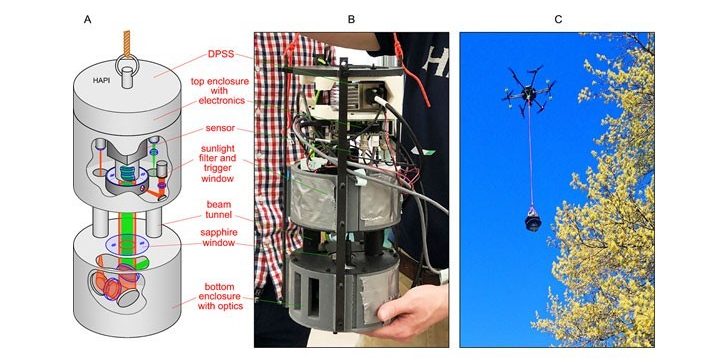ADELPHI, Md. — An Army researcher, along with university partners, developed a miniaturized holography instrument that is being used on unmanned aerial vehicles to safely and efficiently capture images for the detection and characterization of aerosols, contributing to the situational awareness and lethality of Soldiers.
The instrument, called the holographic aerosol particle imager, or HAPI, has the unique ability to image multiple particles freely entering its sensing volume from any direction via a single measurement. Using digital holography, the instrument obtains the images in a noncontact manner, resolving particles larger than 10 micrometers in a sensing volume of approximately 3 cubic centimeters.
The construction of HAPI consists of 3-D-printed polymer structures that enable a sufficiently low size and weight so it can be flown on a commercial-grade UAV.
This research originated at the U.S. Army Combat Capabilities Development Command’s (CCDC’s) Army Research Laboratory (ARL) about 10 years ago, with current CCDC ARL researcher and fellow Dr. Gorden Videen and the then postdoctoral student Dr. Matthew Berg, now a professor at Kansas State University.


